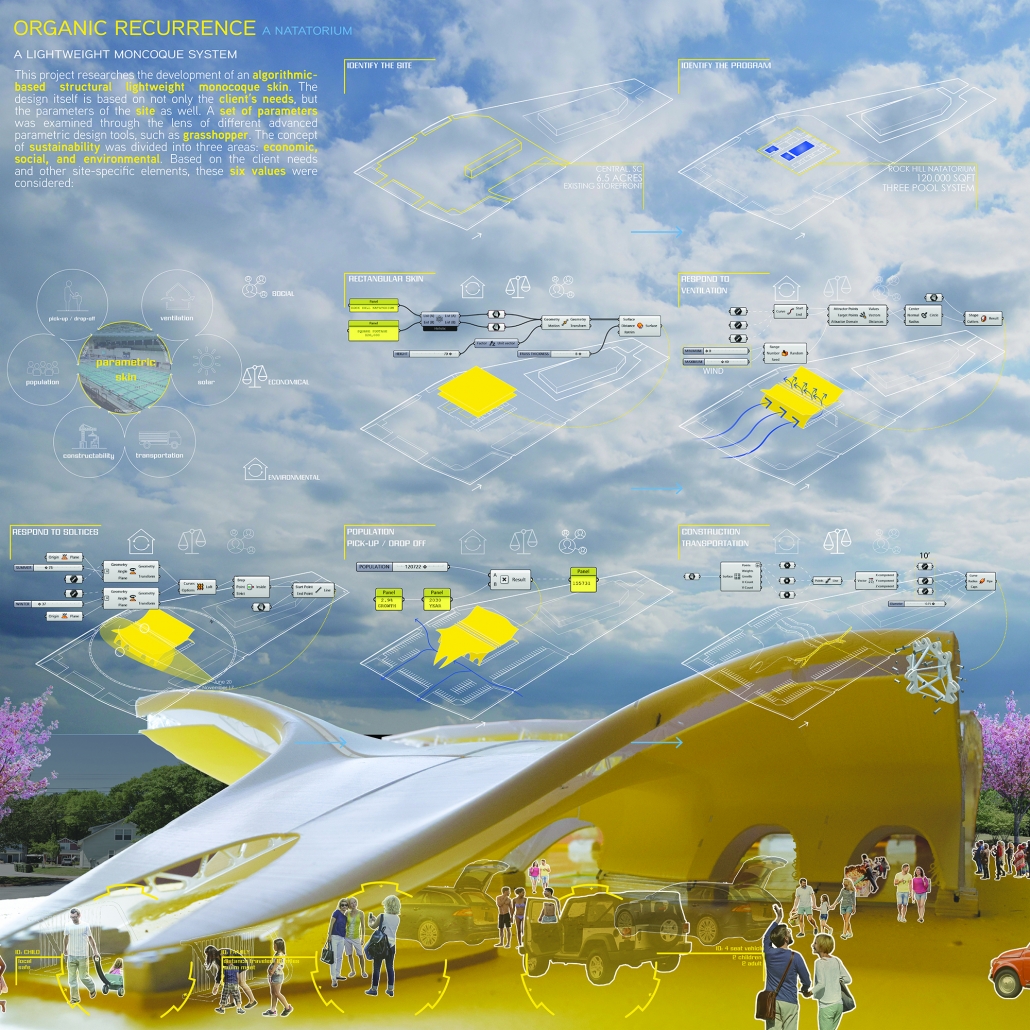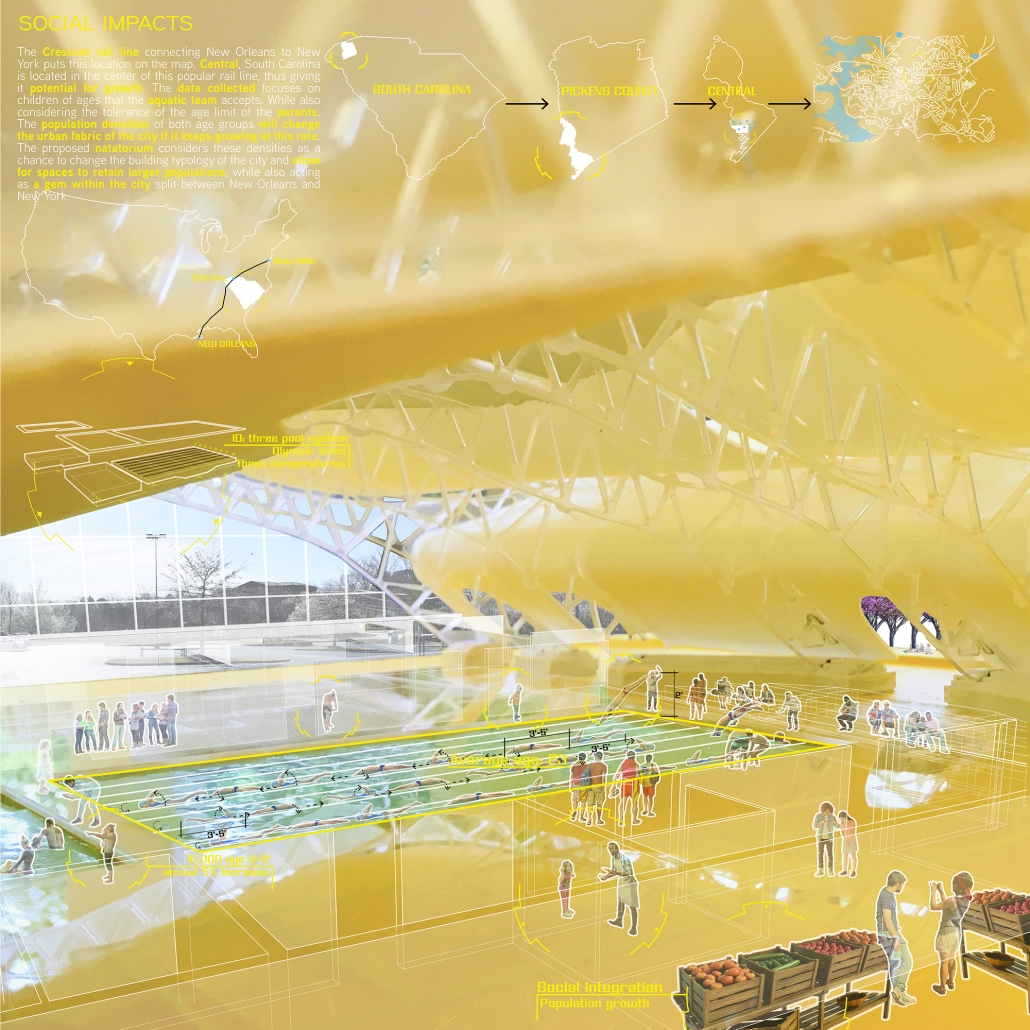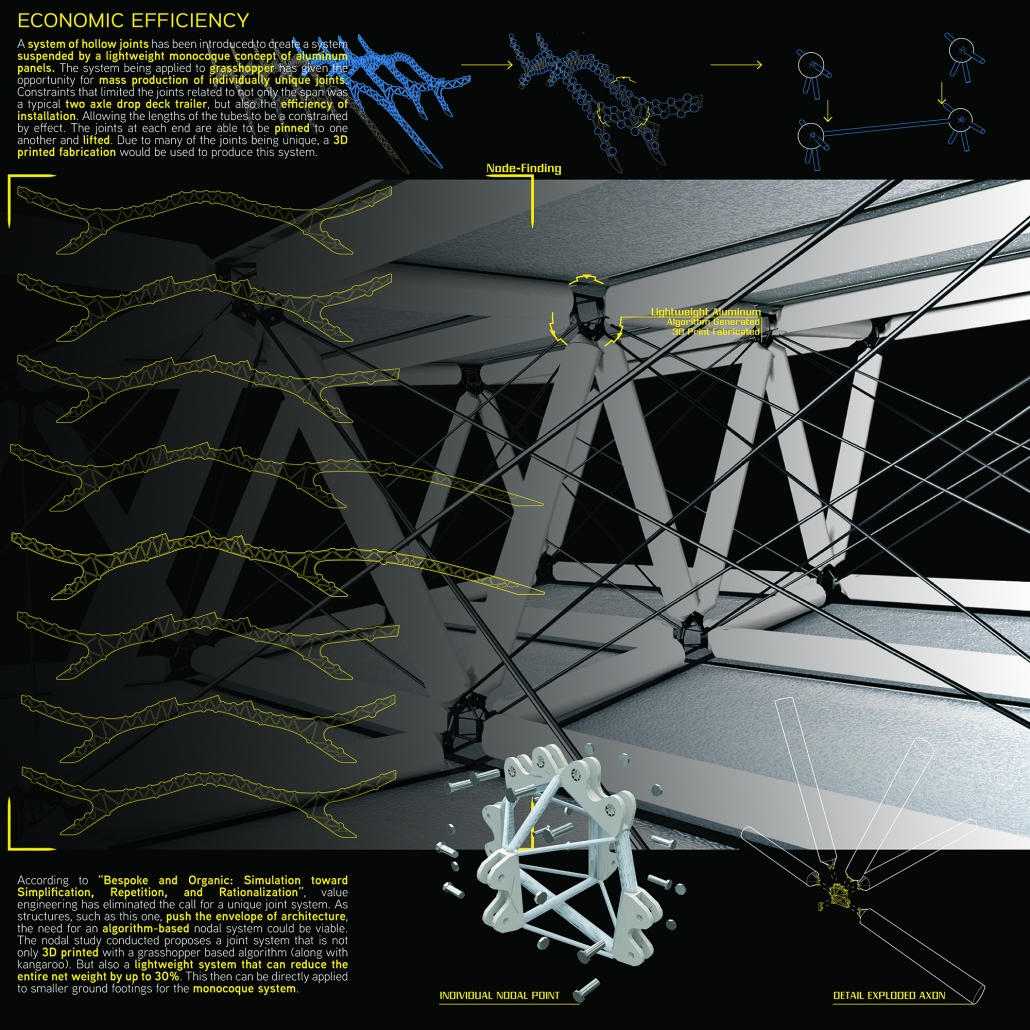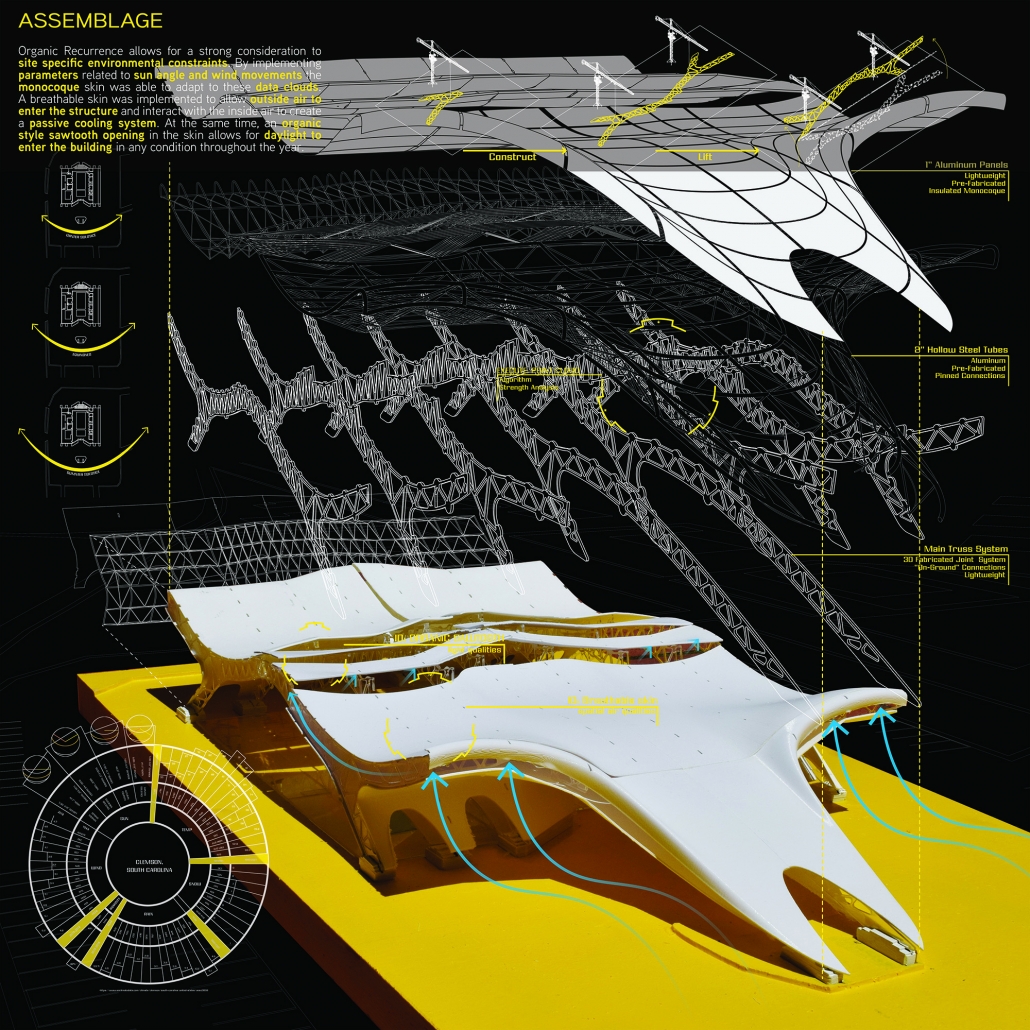2018-2019 Steel Competition
Honorable Mention: ORGANIC RECURRENCE
Richard Moore
Honorable Mention: Organic Recurrence: A Lightweight Monocoque System
Student: Richard Moore
Faculty: Daniel Harding
School: Clemson University
Project Description
The studio titled “The Transparent Citizen” follows university issues relating to 3rd party occupation of spaces. Due to this issue, many organizations within the community of the university are being forced to find new locations, sooner than later. For many of these organizations, finding a new recreation facility calls upon issues of the unknown as well as the improbable. The initial concept to the project was examining the meaning of a feasibility study that a natatorium of this size might require. The largest community question that arose from the study was; “How does this help us build a natatorium?”. An intensive study before the design of the project is crucial to beginning a natatorium that is up to the USA Olympic regulations of a three-pool system. To help create a smooth transition and integration through this study and into the design phase, the premise of: “how can algorithms be implemented to form sustainable structures that can envelope any program?”, arose. This premise is based on the idea that continuous development of architectural production methods and research have allowed algorithmic pattern languages within a program to develop. This project researches the development of an algorithmic-based structural skin as well as programmatic footprint based on not only the client’s needs, but the parameters of the site as well. A set of parameters was examined through the lens of different advanced parametric design tools. The concept of sustainability was divided into three areas: economic, social, and environmental.
With advancements in technology, 3D printed structural node systems can be researched and developed to give way to a more unique set of connections. Through the process of 3D printing, the construction process of a monocoque system can be streamlined with offsite algorithmic studies of the unique connections. These can then be manufactured and transported on site as a kit of parts to then be connected and welded. According to “Bespoke & Organic” typical node connections can account for 20-40% of the net structural weight. The implementation of a node system that is 3D printed in a lightweight aluminum alloy, manufactured to fit into a unique place within the structure calls for a change in which we examine typical steel structures. The monocoque system of lightweight aluminum panels allow for structural integrity in not only the joints, but the skin as well. An algorithm was implemented and tested to control the on-site conditions that then gave constraint to the skin allowing it to mold to parameters set by the system.
The qualitative aspects of the space allow for the three-pool natatorium to complement a farmer’s market. This creates cooperation of multiple facets within the community at large, while also providing the large footprint of the building a programmatic element that provides a purpose throughout all seasons.
In conclusion, this lightweight monocoque system allows for quick solutions to unique structures that are not unique qualitatively, but quantitatively as well. Organic forms tend to take on the persona of the architect that designs them, as each one has a unique system that is constant to the architect themselves. By implementing form-based data, taken from a feasibility study, and plugging it into an algorithm that gives a unique shape based on the site as well as the program creates a gem within the city no matter where it is placed. Further investigation into this project will be examined to progress the algorithm past testing phases and refine the system’s efficiency based on other programmatic tests that are not a natatorium. The goal is that, one day glimpses of this project can change the way we consider long span structures for efficiency and beauty.

 Study Architecture
Study Architecture  ProPEL
ProPEL 



